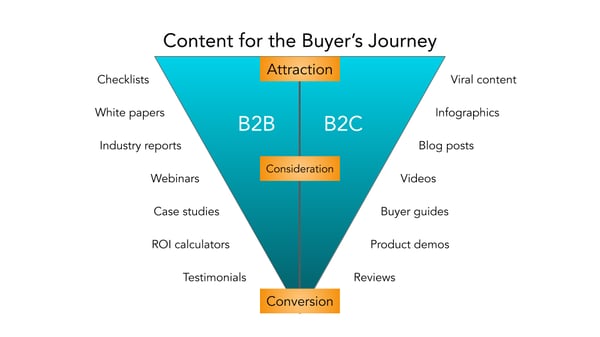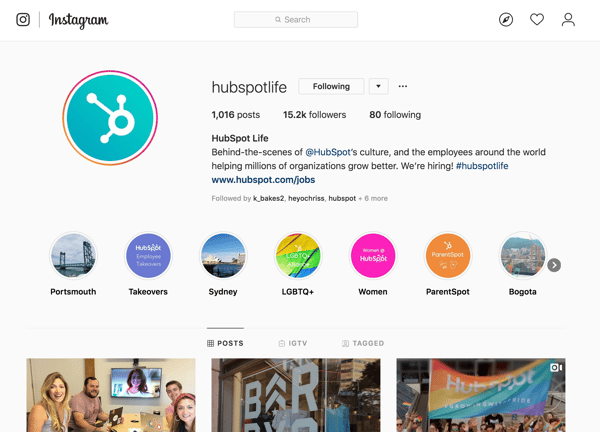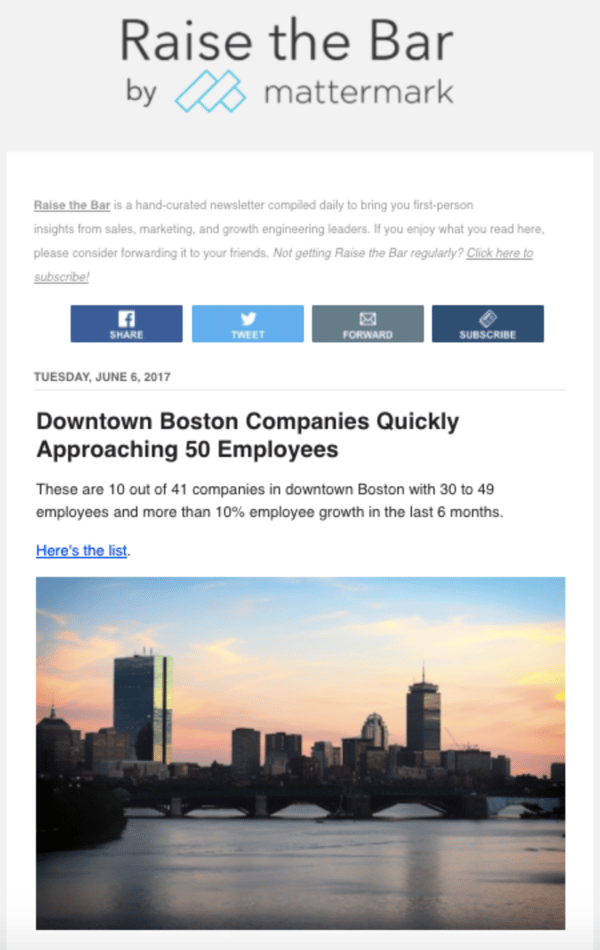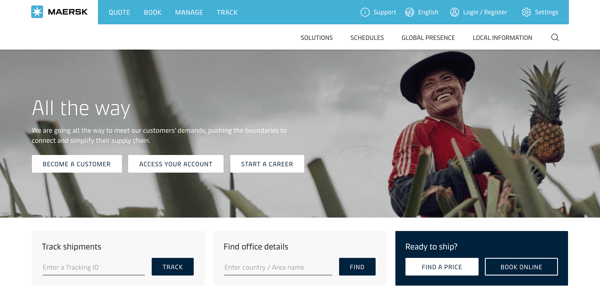Just like Joey from "Friends," we recognize the importance of giving and receiving in marketing. One of the best things to give and receive is feedback.
Without feedback, we would never be able to improve. And even though it's hard, feedback is a great way to measure success.
With a post event survey, you'll learn what attendees thought about the event, how they heard about it, and what they enjoyed most. Measuring attendee satisfaction will help you improve your event marketing and figure out what's working and what isn't.
In fact, 90% of virtual event organizers use surveys to measure attendee satisfaction. And 80% report that attendee engagement and satisfaction were KPIs used for measuring event success.
To design a post event survey, you'll want to ask several types of questions -- from Yes/No, rating, to open-ended questions.
Below, let's review the best post event survey questions to ask.
1. How satisfied were you with the event?
First and foremost, it's important to ask attendees about their overall satisfaction with an event. You can also ask participants to rate specific things including the venue, date, speakers, vendors, catering, quality of sessions, amount of sessions, and more.
This will help you gauge specifically how well you did in each area, but also the overall satisfaction of attendees.
This is probably the first and most important question that is asked on most surveys. It's a great starting point for the specific questions that follow next.
2. What was your favorite experience or moment of the event?
This question should be open-ended and let the participants describe what they liked most about the event and why they liked that moment.
This will help you discover what you did right and what experiences are most valuable to your event attendees.
With this information, you can get an idea about how to plan events in the future and figure out if there's anything that a majority of your attendees agree with or want to see again.
3. What could we improve on?
Again, this will be an open-ended question that lets your participants give constructive feedback. While it's hard to hear sometimes, this will help you figure out what resonates with your audiences and what doesn't.
By tracking what audiences don't like, you can then improve and iterate future events so people don't have those barriers about attending your next event.
The point of getting feedback isn't just to receive positive feedback, but to figure out what isn't working as well.
4. How useful was the event?
This is a great question for figuring out how actionable the event content was. Did your attendees find the information useful? Did they learn anything? Were they able to apply something they learned from your event into their work flow?
Depending on the type of event you're holding, this can be a great way to figure out if people felt they got their money's worth.
5. Did the event meet your expectations?
Similar to the question above, this question measures if people got what they thought they were going to get. This answers the question, "Did my audience achieve their goal by attending this event?"
This should be an open-ended question that allows users to expand and explain why the event met their expectations, or why it didn't.
6. How likely would you be to attend our events in the future?
With this question, you'll learn how many people plan to keep up to date with your events. If they were generally satisfied, they'll say yes. If they weren't, they'll say no.
This does a good job of figuring out how well you marketed and sold your company as an authority and trustworthy leader in the industry.
7. Would you recommend our events to a friend or colleague?
Given that people are more likely to purchase a product their friend has shared with them and the importance of customer reviews, referrals are a great way to measure how satisfied your event attendees are.
Liking your event or products isn't enough -- do they like you enough to talk about you with their friends? That's the true mark of success for an event.
8. Did you have an opportunity and place to ask questions and participate?
Whether you provided online support or you had event helpers around the building, it's important to note whether attendees noticed that help and if they felt supported. When you run an event, there are bound to be questions about registration, access to certain workshops, and more.
This question lets you know that your audience knew where to go if they had a question. If they didn't feel like they had a space to ask questions, then you can do better about promoting your support channels.
9. What would have made this event better?
This is a great question to crowdsource event ideas from your target audience. What do they want to see? What gaps did they see in your event from competitors? With this question, you'll be able to brainstorm ways to improve your next event.
10. Why did you attend this event?
You can use this question as a way to inform your pre event marketing. This will let you know what your audience liked about your marketing and what they expected from you. This open-ended question will give you a chance to show up for your audience and give them what they want.
11. How did you hear about this event?
Again, this is a great way to evaluate your pre event marketing. Where are attendees learning about your event? What marketing channels are working best? What marketing channels aren't working at all?
This will tell you where to focus your pre event marketing for your next event and let you know places where you need to pay more attention and improve on.
12. Have you attended this event before?
A great metric to keep track of is how many repeat attendees you have coming to your regular or annual events. This will let you know how many people see the value in your event and want to continue attending.
Again, this metric will let you know where to focus your marketing efforts. Do you want to increase repeat attendance? Then perhaps you need to focus on the customer experience during the event. Do you have great repeat customers but not enough new acquisitions? This will let you know that you need to focus on pre event marketing channels.
13. Would you want to attend this event again in the future?
This question, while similar to one of the above, measures how likely someone is to attend the same event in the future. Do they see value in attending this event every year? Or do they feel like they got everything they needed?
Again, just like it's easier to retain customers than get new ones, it's easier to convince former participants to attend the same event again. This will reveal if your audience is excited about coming to your event in the future and then you can compare with the number of attendees who actually came back the next year.
14. Have you attended our other events before?
This question will let you know how many loyal followers you have. Are the people coming to your events in your community? Or are these new people who haven't heard of your brand before? This will help you measure where you're acquiring event attendees.
15. Were you satisfied with the amount of activities/workshops?
This is a specific question that measures satisfaction with the quantity of activities or workshops available to attendees. Essentially, was there enough for your participants to do during the event. Or was there too much? Either way, this question is important to figure out if you and your audience are aligned on what content they want.
16. Were you satisfied with the quality of the content?
Once you know how much content to offer your audience, it's time to ask about the quality of the content. Did they find the information helpful? Was this worth paying for? This will help establish trust with your audience that you can present high quality content and information that they find valuable and useful.
This will also help you gauge what content your audience is interested in. If they were not satisfied with the quality, it could be because the type of content, the speakers, or the way it was presented.
17. How helpful was the staff at the event?
This is an excellent question that will help you figure out how your staff performed during this event. When attendees asked questions or used support, was the staff friendly and helpful? Or was there a staffing issue?
This will help you figure out how quickly issues were resolved and if participants enjoyed their experience.
18. What was your biggest takeaway from the event?
Again, this helps you determine what people were able to learn from your event and what they got out of it. Does that align with your goals for the event? If not, this is a great way to learn what people took away from your event and what they expected.
19. How satisfied were you with the virtual experience?
If you're holding a virtual event, it's important to add post event questions that measure the success of the virtual experience.
You can leave this as a rating and/or an optional open-ended question to let people explain why they were or were not satisfied with the virtual experience. Attendees might comment on the ease of navigation or the audio quality, for instance.
20. What were your favorite virtual features?
If you offered any special online features or an event app, this is the place to figure out what your attendees thought about those features. This lets you measure the success of your virtual platform overall -- did this platform provide features that your audience liked? Or were there other features they wished were available?
21. How easy to navigate was the platform for the event?
Similarly, this question is meant to measure the effectiveness of your online platform for your virtual events. If the platform isn't intuitive or easy for participants to use, then they probably won't consider coming back for your other events. This will help you gauge if improvements need to be made to the online experience.
22. How satisfied were you with the networking opportunities provided?
Lots of marketing events are meant to allow networking and a lot of people attend these events to network with other professionals. If networking is something that your audience wants from you, it's important to measure the success of your networking opportunities.
This can be a rating question or an open-ended question so your attendees can elaborate on what they liked about the networking opportunities or didn't like.
23. What topics would you want to see more of at future events?
Again, it's always a good idea to learn what content your audience wants to see. How can you figure that out? Just ask.
In your survey, you can ask what type of topics they're interested in learning about in the future. This will also give you new perspectives and content ideas for your next event.
24. How did this event impact your perception of our company?
This is a great question for learning how effective your brand story and messaging is at your event. Is your branding clear through your event marketing materials? How does it fit in to the larger strategic picture? This question will let you track how effective your event was in terms of branding.
25. Please share any additional comments, thoughts, suggestions for future events.
Of course, ending with an open-ended question where participants can leave feedback on any area is a best practice. You want your attendees to feel like they can tell you their overall thoughts and opinions.
Hopefully the questions in your survey got your attendees thinking and they might also feel like there are other topics to cover. Since you can't ask every question you'd probably like to, this helps you figure out what's important to your audience.
Post event surveys are mainly used to measure how successful an event was. These surveys will give you information that you need to improve future events.
Now, post event survey questions aren't the only type of surveys you'll want to send out. You might consider also sending a pre-event survey. A pre-event survey will help you measure your current event marketing, see what got people excited about the event in the first place, and how to tailor the event to the actual attendees.
Here are some examples of what that might look like.
1. How did you hear about this event?
This question is great to ask either before or after an event. You could send this in a pre event survey to figure out what marketing channels are working the best. This will help you make changes to your budget and priorities when you continue marketing the event.
2. What are you most excited about?
With this pre event question, you can gauge what people are most looking forward to. Again, this will help inform your marketing budget and priorities so you can fulfill any customer expectations.
3. Have you attended this event before?
Similar to the first question, this can be asked before or after an event. The reason to find this out before an event is to see if you are getting a lot of repeat attendees or if you need to do more marketing to previous attendees.
4. Why did you choose to attend this event?
This is a great question to ask before an event because it will tell you what people are most looking forward to. This will help you prepare for an event so you can deliver on what people are expecting.
5. Do you have special accommodations you would like us to be aware of?
Logistically, this is important to know. If you don't have a lot of attendees, and accommodations need to be made, then you should be aware of what those accommodations are. If you're holding a larger event, you need to consider the type of accommodations you'll need to make for various attendees.
6. Was there any event information that was difficult for you to find?
Again, this will help you make adjustments to the pre event and registration process while it's still going on. This should help you get more registrants, ultimately, because you can pivot your strategy in real time.
7. Which social media platform do you use the most?
If you don't have a plan for how you're going to communicate with your attendees during the event, social media is a great option. But what platform would work best? You can use a pre event survey to learn what social media platforms your audience uses the most, so you can provide helpful information during your event.
Conducting pre or post event surveys is an important part of measuring the success of your event team and marketing team. To do this, you can use a survey tool, like HubSpot. Regardless of the tool you use, remember that the goal of sending a survey is to receive both positive and constructive feedback so that you can improve your event marketing and events.
from Marketing https://blog.hubspot.com/marketing/post-event-survey-questions
Just like Joey from "Friends," we recognize the importance of giving and receiving in marketing. One of the best things to give and receive is feedback.
Without feedback, we would never be able to improve. And even though it's hard, feedback is a great way to measure success.
With a post event survey, you'll learn what attendees thought about the event, how they heard about it, and what they enjoyed most. Measuring attendee satisfaction will help you improve your event marketing and figure out what's working and what isn't.
In fact, 90% of virtual event organizers use surveys to measure attendee satisfaction. And 80% report that attendee engagement and satisfaction were KPIs used for measuring event success.
To design a post event survey, you'll want to ask several types of questions -- from Yes/No, rating, to open-ended questions.
Below, let's review the best post event survey questions to ask.
1. How satisfied were you with the event?
First and foremost, it's important to ask attendees about their overall satisfaction with an event. You can also ask participants to rate specific things including the venue, date, speakers, vendors, catering, quality of sessions, amount of sessions, and more.
This will help you gauge specifically how well you did in each area, but also the overall satisfaction of attendees.
This is probably the first and most important question that is asked on most surveys. It's a great starting point for the specific questions that follow next.
2. What was your favorite experience or moment of the event?
This question should be open-ended and let the participants describe what they liked most about the event and why they liked that moment.
This will help you discover what you did right and what experiences are most valuable to your event attendees.
With this information, you can get an idea about how to plan events in the future and figure out if there's anything that a majority of your attendees agree with or want to see again.
3. What could we improve on?
Again, this will be an open-ended question that lets your participants give constructive feedback. While it's hard to hear sometimes, this will help you figure out what resonates with your audiences and what doesn't.
By tracking what audiences don't like, you can then improve and iterate future events so people don't have those barriers about attending your next event.
The point of getting feedback isn't just to receive positive feedback, but to figure out what isn't working as well.
4. How useful was the event?
This is a great question for figuring out how actionable the event content was. Did your attendees find the information useful? Did they learn anything? Were they able to apply something they learned from your event into their work flow?
Depending on the type of event you're holding, this can be a great way to figure out if people felt they got their money's worth.
5. Did the event meet your expectations?
Similar to the question above, this question measures if people got what they thought they were going to get. This answers the question, "Did my audience achieve their goal by attending this event?"
This should be an open-ended question that allows users to expand and explain why the event met their expectations, or why it didn't.
6. How likely would you be to attend our events in the future?
With this question, you'll learn how many people plan to keep up to date with your events. If they were generally satisfied, they'll say yes. If they weren't, they'll say no.
This does a good job of figuring out how well you marketed and sold your company as an authority and trustworthy leader in the industry.
7. Would you recommend our events to a friend or colleague?
Given that people are more likely to purchase a product their friend has shared with them and the importance of customer reviews, referrals are a great way to measure how satisfied your event attendees are.
Liking your event or products isn't enough -- do they like you enough to talk about you with their friends? That's the true mark of success for an event.
8. Did you have an opportunity and place to ask questions and participate?
Whether you provided online support or you had event helpers around the building, it's important to note whether attendees noticed that help and if they felt supported. When you run an event, there are bound to be questions about registration, access to certain workshops, and more.
This question lets you know that your audience knew where to go if they had a question. If they didn't feel like they had a space to ask questions, then you can do better about promoting your support channels.
9. What would have made this event better?
This is a great question to crowdsource event ideas from your target audience. What do they want to see? What gaps did they see in your event from competitors? With this question, you'll be able to brainstorm ways to improve your next event.
10. Why did you attend this event?
You can use this question as a way to inform your pre event marketing. This will let you know what your audience liked about your marketing and what they expected from you. This open-ended question will give you a chance to show up for your audience and give them what they want.
11. How did you hear about this event?
Again, this is a great way to evaluate your pre event marketing. Where are attendees learning about your event? What marketing channels are working best? What marketing channels aren't working at all?
This will tell you where to focus your pre event marketing for your next event and let you know places where you need to pay more attention and improve on.
12. Have you attended this event before?
A great metric to keep track of is how many repeat attendees you have coming to your regular or annual events. This will let you know how many people see the value in your event and want to continue attending.
Again, this metric will let you know where to focus your marketing efforts. Do you want to increase repeat attendance? Then perhaps you need to focus on the customer experience during the event. Do you have great repeat customers but not enough new acquisitions? This will let you know that you need to focus on pre event marketing channels.
13. Would you want to attend this event again in the future?
This question, while similar to one of the above, measures how likely someone is to attend the same event in the future. Do they see value in attending this event every year? Or do they feel like they got everything they needed?
Again, just like it's easier to retain customers than get new ones, it's easier to convince former participants to attend the same event again. This will reveal if your audience is excited about coming to your event in the future and then you can compare with the number of attendees who actually came back the next year.
14. Have you attended our other events before?
This question will let you know how many loyal followers you have. Are the people coming to your events in your community? Or are these new people who haven't heard of your brand before? This will help you measure where you're acquiring event attendees.
15. Were you satisfied with the amount of activities/workshops?
This is a specific question that measures satisfaction with the quantity of activities or workshops available to attendees. Essentially, was there enough for your participants to do during the event. Or was there too much? Either way, this question is important to figure out if you and your audience are aligned on what content they want.
16. Were you satisfied with the quality of the content?
Once you know how much content to offer your audience, it's time to ask about the quality of the content. Did they find the information helpful? Was this worth paying for? This will help establish trust with your audience that you can present high quality content and information that they find valuable and useful.
This will also help you gauge what content your audience is interested in. If they were not satisfied with the quality, it could be because the type of content, the speakers, or the way it was presented.
17. How helpful was the staff at the event?
This is an excellent question that will help you figure out how your staff performed during this event. When attendees asked questions or used support, was the staff friendly and helpful? Or was there a staffing issue?
This will help you figure out how quickly issues were resolved and if participants enjoyed their experience.
18. What was your biggest takeaway from the event?
Again, this helps you determine what people were able to learn from your event and what they got out of it. Does that align with your goals for the event? If not, this is a great way to learn what people took away from your event and what they expected.
19. How satisfied were you with the virtual experience?
If you're holding a virtual event, it's important to add post event questions that measure the success of the virtual experience.
You can leave this as a rating and/or an optional open-ended question to let people explain why they were or were not satisfied with the virtual experience. Attendees might comment on the ease of navigation or the audio quality, for instance.
20. What were your favorite virtual features?
If you offered any special online features or an event app, this is the place to figure out what your attendees thought about those features. This lets you measure the success of your virtual platform overall -- did this platform provide features that your audience liked? Or were there other features they wished were available?
21. How easy to navigate was the platform for the event?
Similarly, this question is meant to measure the effectiveness of your online platform for your virtual events. If the platform isn't intuitive or easy for participants to use, then they probably won't consider coming back for your other events. This will help you gauge if improvements need to be made to the online experience.
22. How satisfied were you with the networking opportunities provided?
Lots of marketing events are meant to allow networking and a lot of people attend these events to network with other professionals. If networking is something that your audience wants from you, it's important to measure the success of your networking opportunities.
This can be a rating question or an open-ended question so your attendees can elaborate on what they liked about the networking opportunities or didn't like.
23. What topics would you want to see more of at future events?
Again, it's always a good idea to learn what content your audience wants to see. How can you figure that out? Just ask.
In your survey, you can ask what type of topics they're interested in learning about in the future. This will also give you new perspectives and content ideas for your next event.
24. How did this event impact your perception of our company?
This is a great question for learning how effective your brand story and messaging is at your event. Is your branding clear through your event marketing materials? How does it fit in to the larger strategic picture? This question will let you track how effective your event was in terms of branding.
25. Please share any additional comments, thoughts, suggestions for future events.
Of course, ending with an open-ended question where participants can leave feedback on any area is a best practice. You want your attendees to feel like they can tell you their overall thoughts and opinions.
Hopefully the questions in your survey got your attendees thinking and they might also feel like there are other topics to cover. Since you can't ask every question you'd probably like to, this helps you figure out what's important to your audience.
Post event surveys are mainly used to measure how successful an event was. These surveys will give you information that you need to improve future events.
Now, post event survey questions aren't the only type of surveys you'll want to send out. You might consider also sending a pre-event survey. A pre-event survey will help you measure your current event marketing, see what got people excited about the event in the first place, and how to tailor the event to the actual attendees.
Here are some examples of what that might look like.
1. How did you hear about this event?
This question is great to ask either before or after an event. You could send this in a pre event survey to figure out what marketing channels are working the best. This will help you make changes to your budget and priorities when you continue marketing the event.
2. What are you most excited about?
With this pre event question, you can gauge what people are most looking forward to. Again, this will help inform your marketing budget and priorities so you can fulfill any customer expectations.
3. Have you attended this event before?
Similar to the first question, this can be asked before or after an event. The reason to find this out before an event is to see if you are getting a lot of repeat attendees or if you need to do more marketing to previous attendees.
4. Why did you choose to attend this event?
This is a great question to ask before an event because it will tell you what people are most looking forward to. This will help you prepare for an event so you can deliver on what people are expecting.
5. Do you have special accommodations you would like us to be aware of?
Logistically, this is important to know. If you don't have a lot of attendees, and accommodations need to be made, then you should be aware of what those accommodations are. If you're holding a larger event, you need to consider the type of accommodations you'll need to make for various attendees.
6. Was there any event information that was difficult for you to find?
Again, this will help you make adjustments to the pre event and registration process while it's still going on. This should help you get more registrants, ultimately, because you can pivot your strategy in real time.
7. Which social media platform do you use the most?
If you don't have a plan for how you're going to communicate with your attendees during the event, social media is a great option. But what platform would work best? You can use a pre event survey to learn what social media platforms your audience uses the most, so you can provide helpful information during your event.
Conducting pre or post event surveys is an important part of measuring the success of your event team and marketing team. To do this, you can use a survey tool, like HubSpot. Regardless of the tool you use, remember that the goal of sending a survey is to receive both positive and constructive feedback so that you can improve your event marketing and events.
![Download free resources for executing your best event yet. [Free Kit]](https://no-cache.hubspot.com/cta/default/53/7ad084e3-bb2d-429e-9cbd-2b09416729f1.png)
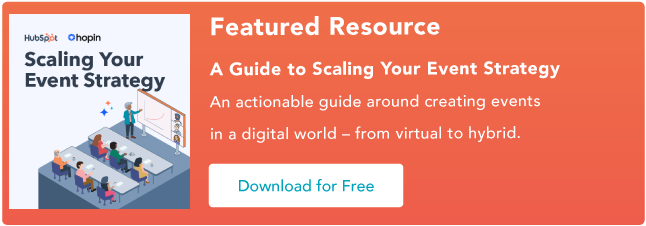



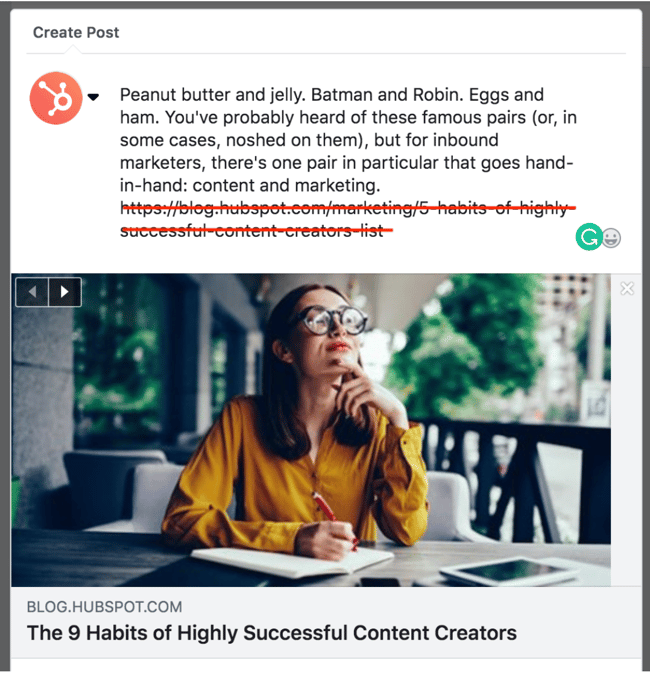
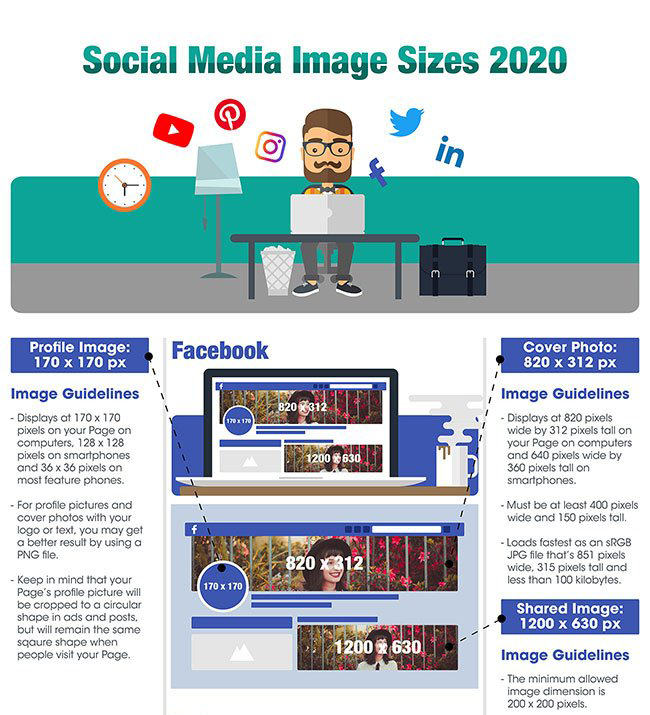
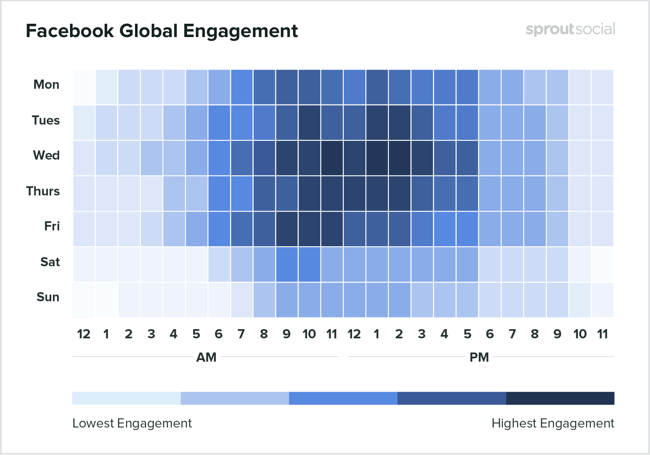

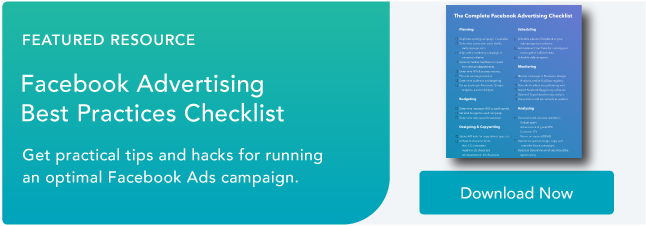
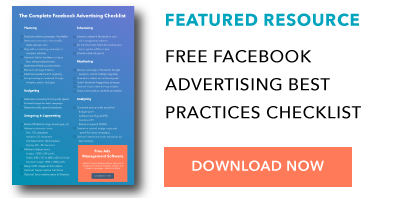
![→ Download Now: Free Product Marketing Kit [Free Templates]](https://no-cache.hubspot.com/cta/default/53/08b5e1f4-5d26-405b-b986-29c99bd0cb14.png)

